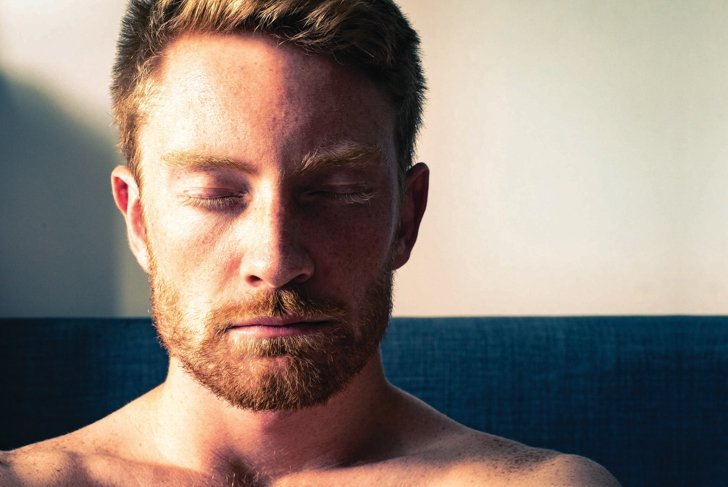
It’s January, so your head might be swimming with intentions for the year ahead: resolutions to set, goals to nail, habits to form, and visualizations to implement. Where to begin? And what’s the difference between a resolution and a goal, anyway?
Resolution versus goal setting
A resolution is a decision to do something (or not do something). Many resolutions fall flat because a decision, by itself, is not enough to sustain long-term behaviour change.
A goal is a desired result. Goal setting is associated with higher self-esteem, self-confidence, and success—but only when certain conditions are met, such as creating an action plan to achieve your goal.
Make habits to achieve goals
Goals are great for setting a direction, but to actually make progress, you need habits. As James Clear writes in his book Atomic Habits (Avery, 2018), “You do not rise to the level of your goals. You fall to the level of your systems.”
So, a goal without habits is just an abstract wish. Focusing on the goal alone can reduce the happiness you feel right now. When your singular focus is on achieving an outcome goal, you’re essentially saying, “I’ll be happy as soon as I achieve X.” When we fail to achieve an end goal, we often feel bad about ourselves, even if we’ve made immense progress—that’s the dark side of goals.
Turning your goals into habits, however, can shield you from their potential negative effects. A goal with built-in habits and systems is much more likely to result in success.
Enjoy small wins on the road toward your goal
Focusing on smaller habits, rather than the goal itself, will help you to enjoy the day-to-day process of working toward a goal. It will keep you grounded in the present, instead of focusing all your energy on the future.
Focusing on smaller habits, instead of on a particular outcome, also lets you notice and appreciate “small wins”: incremental steps toward achieving your bigger goal. “Write one page a day” or “walk 15 minutes per day” sounds (and is) much more manageable than “write a book” or “lose 30 pounds.”
This way, you’ll still get results—probably even better ones than if you’d committed to an abstract goal instead of a habit or process. And even if you don’t achieve your ultimate outcome, you can still appreciate the progress you’ve achieved along the way—minus the stress and overwhelmed feelings.
Understand outcomes versus inputs
Resolutions are typically outcome goals like “I’ll lose 30 pounds this year” or “I’m going to squat my bodyweight for 10 reps this year.” You can’t directly control what the scale says, how many inches you’ll lose from your waist within the next six months, or how much weight you’ll be able to add to your barbell squat. Those are all outputs: measures of results.
What you can control is your inputs. These might include focusing on eating mostly whole foods, exercising regularly, and practising barbell squats twice a week.
If you set an outcome goal for yourself to provide direction, make sure you have corresponding habit goals in place. These will be your inputs—what you’ll do to achieve your outcome goal. For example, if your goal is to perform your first unassisted chin-up, your habit goal (and your main focus) could be to practise chin-ups three days a week for six months.
Where does visualization fit in?
Visualization is an automatic part of goal setting, since we’re imagining a future outcome for ourselves, but it can be used more deliberately, too.
Our brains treat real memories and imagined (visualized) ones very similarly. When we visualize an action, the same areas of the brain are activated as when we actually perform that action. This is why visualization can be so effective in mastering new skills: visualization creates changes in your brain as though your imagined experiences were real.
When visualizing a particular outcome for yourself, make sure to include as many senses as possible: touch, smell, sight, sound, and taste. This will make your visualization as realistic as possible and engage more areas of your brain. Like meditation, visualization works best with repeated daily practice.
Goal setting and visualization achieved a successful recovery
My long-term fitness coaching client and business assistant, Izzy Pope-Moore, was diagnosed with a hiatal hernia: her stomach bulged through her diaphragm and into her chest cavity. To correct this condition, in 2016 she underwent invasive surgery involving nine incisions into her abdomen. Goal setting and visualization became key components of her recovery process.
Pope-Moore’s main (outcome) goal, as someone who strength-trained regularly, was to get back to her pre-surgery strength levels. This took about 18 months. To prevent being overwhelmed, though, she broke this down into smaller, more manageable habits.
Pope-Moore says, “Immediately after surgery, I focused on small actions to help me get moving and to build up my strength again. In the hospital, my main focus was to be able to get out of bed. That took around four days to master! After that, I mastered walking to the patient and family room, and on day six, I was finally allowed to go home to recover.”
Once she regained her mobility, she started focusing on regaining her fitness.
“I wasn’t allowed to lift anything for six weeks, so I used walking as my way of being active. Once I was discharged from the hospital, every day I would go for a walk with my dad. These started out as five-minute walks, and we would increase the distance every day,” says Pope-Moore.
Creating smaller (input) goals like extending the length of her walk each day set Pope-Moore up for small wins, which kept her motivated. She also used visualization in her recovery, mainly to help her get up and around in the hospital.
“Picturing myself getting better, getting out of hospital, sleeping in my own bed, and getting out and about gave me determination that I was going to be okay and that I could get strong again.
“Once I mastered walking around Vancouver’s Stanley Park (10 km/6 mi) about three weeks after my surgery, I realized that I was doing pretty well, and I was on the right road to recovery.”
Goal setting and visualization: the stats
Writing it down leads to greater success!
Research from 2015 found that people who write down their goals are 33 percent more likely to achieve them, compared to those who formulate goals in their heads.
Visualizing can increase muscle strength!
In one study, participants wore casts for four weeks to immobilize one of their arms. All participants lost strength in their immobilized arms, but the participants who visualized using their arm muscles lost 50 percent less strength than those who didn’t engage in visualization.
Visualizing can help you win!
In 2008, Michael Phelps broke a 200 m butterfly world record while swimming blind (his goggles had filled with water). He credited daily visualization: mentally rehearsing every aspect of the race.
Forming—and breaking—habits
Evolution of a habit
Recent research has found that the striatum, an area of the brain previously associated with decision-making, plays a crucial role in acquiring new habits. A study of rats’ cognitive processes found that as the rats were learning a task, their striata emitted a continuous string of signals. As the task morphed into a habit (with repetitive practice), the neurons fired only at the beginning and end of the task.
Repetitions are key
For new habits to stick, it’s not about how long you need to perform them. It’s about how many repetitions you need to complete. When creating a new habit, think in terms of repetitions, not time.
Swap bad habits for good ones
Replacing negative habits is more effective than eliminating them. Acknowledge the underlying need being addressed by your bad habit and then replace it with a new habit that provides a similar benefit. For example, if you eat sugary foods when you get stressed, find a new way to de-stress, and replace eating sugary foods with that new behaviour.
Karina Inkster, MA, PTS, is a health and fitness coach, author of two books, and podcast host. Her award-winning online programs help vegans worldwide live their healthiest, most plant-strong lives.
A version of this article was published in the January 2020 issue of alive Canada with the title “Ditch Resolutions.”






























